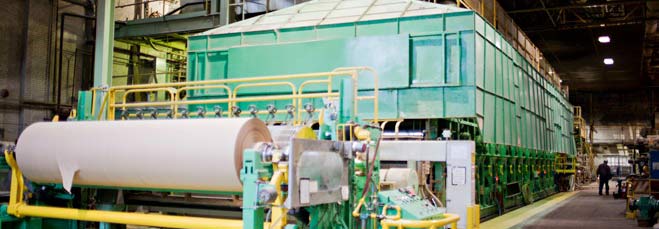
A mill is certainly a place that will have it’s share of problems. And paper mills are no different. In fact, paper mills are one of the more problem heavy members of the manufacturing industry. Paper production involves lots of sensitive equipment such as scanners and drives. The stock (pulp slurry) isn’t the most pleasant material to work with either.
Paper mill foremen could benefit from staying ahead of the maintenance department by taking care to solve potential issues in the mill before they become a hazard. Here are some potential mill issues to be on the look out for.
Is your mill clean?
This is a larger issue than it may first appear. A clean mill is a safe mill, and this is especially true in the paper mill business, as excess dust can affect measurement scanners or cause overheating during the drying process.
Large quantities of paper dust can also cause many negative health problems for your employees, especially in your maintenance workers who are required to navigate the nooks and crannies of the mill’s machinery. Conducting regular, required cleaning operations can help lessen this issue in the long term. In addition, be certain your employees are always on the look out for obvious spills or other cleaning issues that arise, and notify the sanitation team immediately.
Inspect your sensitive equipment regularly
The importance of this advice will ring true when something breaks in the mill. Your most sensitive devices require constant inspection, be on the lookout for these things:
- Inspect your quality control scanners for window damage or obstruction
- Ensure that your motors and drives are operating at the right temperature
- Listen for odd sounds/noises coming from the machines, chances are an abnormal sound is a maintenance issue
- Check the stock flow and be sure it is fed into the machine un-interruped
You’d also be doing yourself a favor by inspecting these problem areas during normal plant operation hours. Moving parts are much more telling when actually moving. You’ll cut down on after hours work this way too.
Train employees carefully
Your best bet for staying on top of your mill’s problems is to train your employees to do the work for you. Instruct them how to troubleshoot problems you’ve noticed to be common at your mill, and how to be on the lookout for suspicious behavior with the machines. Your maintenance workers should also be selected and trained with this in mind. Consider assigning different mechanics to distinct parts of the mill so that their expertise with certain machines will grow at a faster rate.
A great rule of thumb is to ensure someone is available to fix any machine that could possibly break in your mill. We here at Smith’s Hydraulics have stepped in to help many paper mill owners over the years with hydraulic issues. If you ever have any hydraulic issues at the mill, give us a call or send us an email. If it’s a hydraulic issue, we know how to fix it.
